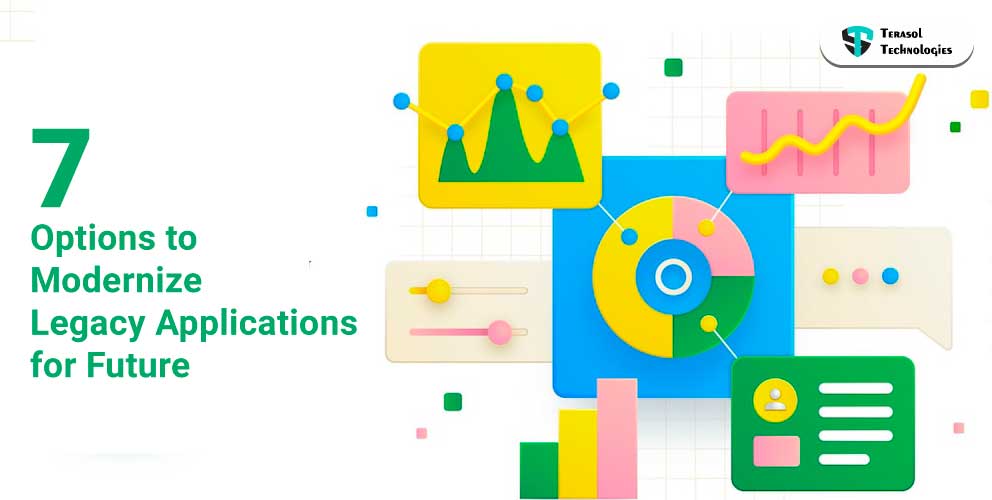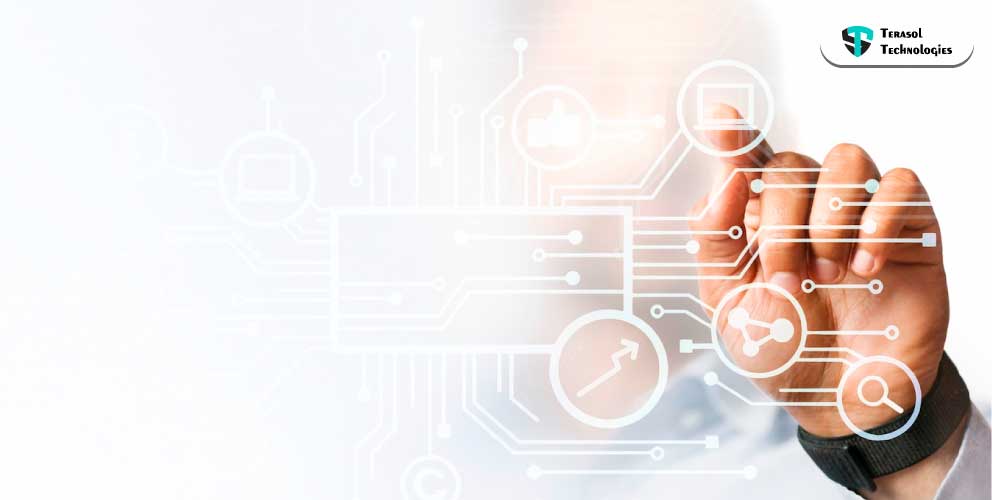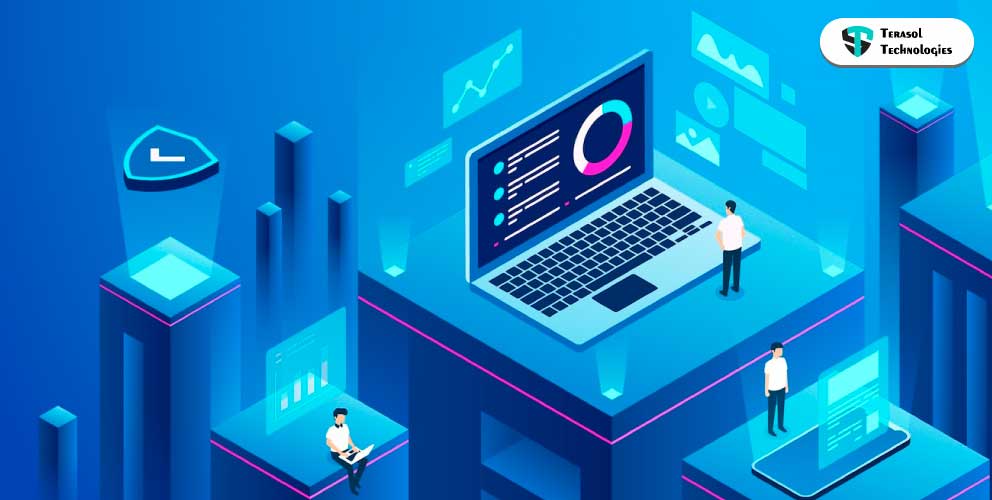3 Step IT Modernization Strategy To Modernize Your Legacy Systems
When outdated systems stifle corporate expansion, IT teams scramble to upgrade existing solutions and extract new business value. The process entails technical or functional enhancements that could include rewriting code, migrating to a new platform, changing the architecture, or even replacing the entire system with a newer one.
IT legacy modernization can be a never-ending effort to improve business performance, reduce processes, and find new ways to serve consumers.
Fully automated migration use technology to convert legacy code and data to current platforms, allowing businesses to focus on modernization projects that are in line with their goals.
There are seven options to legacy software modernization that can help firms get the most out of their existing systems.
📢 Check out these 7 Options to Modernize Legacy Applications for the Future here.
Regardless of how a system is modernized, the greatest thing that can be done to produce a new, scalable solution is to build a robust foundation, which includes the architecture, infrastructure, and delivery cycle.
All three components work together to create an efficient, scalable solution with a short time to market.
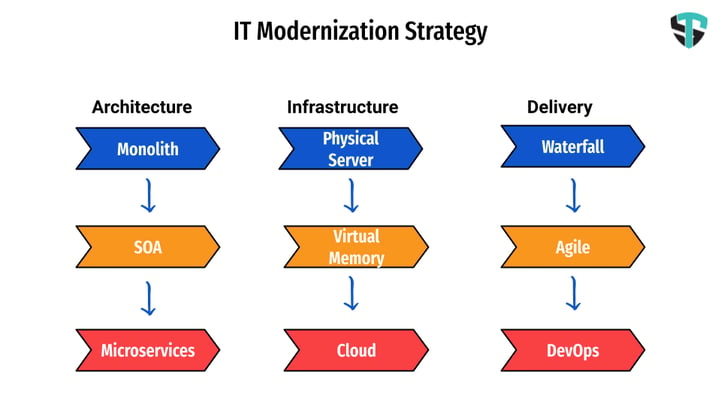
The image shows how the old technologies (that is in blue tags) transform to the modern technologies (in yellow tags) using the different processes (mentioned in red tags).
For effective modernization, it is important to modify the architecture, infrastructure, and delivery.
Three-step IT modernization strategy to transform your legacy systems
1. Software Architecture Modernization
When updating a software modernization, the first step should be to update the architecture, as here is where development begins.
Software architecture specifies how a software system's components should be assembled (architectural pattern), how they should communicate with one another (system integration), and what constraints should govern the entire system.
Software architectures can be developed and designed for a software solution based on-
- How scalable/adaptable an application is,
- How reliant or independent the components are, and
- How the components interact.
As software development becomes more complicated and scalable, it's more important than ever to create software with an architecture that maintains functions and services separately.
That is why the software industry has progressed from monolithic to SOA and microservices architecture.
Service-oriented architecture (SOA) and microservices are modular methods to software design, whereas monolithic architecture provides a single paradigm for developing software. Modern software using microservices architecture is advised for creating scalable, fault-isolated software that can be continuously updated and deployed.
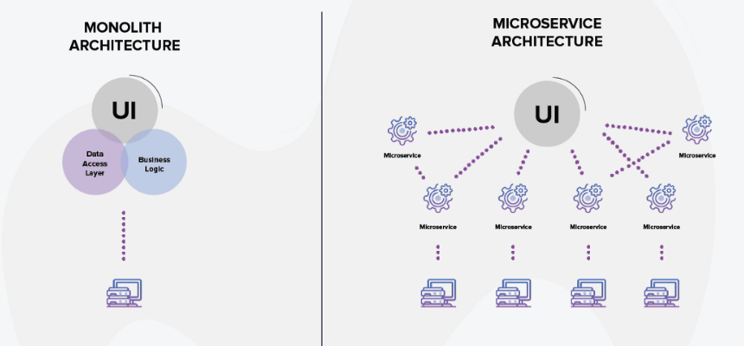
2. Infrastructure Modernization
Because apps can be delivered to the production server numerous times per day, it is critical to automate the infrastructure these days. Because infrastructure services account for a substantial portion of IT expenses, it's critical to optimize the infrastructure.
One of the most popular techniques for infrastructure optimization is to move current infrastructure from physical servers to the cloud.
Different tools, technologies, and services contribute to the scalability, high availability, and manageability of an application. Serverless computing frees up IT infrastructure teams from resource management responsibilities, helps with cost optimization (CapEx, OpEx), improves performance, helps with data recovery, and provides high availability.
When it comes to updating an application, moving infrastructure to the cloud is a must-have for the digital future.
📢 *Read to know why businesses need to Modernize Legacy System for the Digital Future*.
3. Streamline the Delivery Process
While updating the application's infrastructure and architecture, it's also vital to alter the software development delivery method. Even after an application has been put to production, the process of updating and maintaining it continues.
It's critical to pay attention to the delivery cycle to ensure that an application's transition from test to production is as smooth as possible. While Agile approaches stress flexibility, continuous improvement, and cooperation when developing a scalable software application, the delivery cycle requires a complementing strategy. When several updates must be distributed in a single day, automating the delivery process is essential.
To go along with Agile, the DevOps culture arose, which ensures that an application is produced, tested, and released as quickly as possible.
The goal of DevOps is to enable rapid deployment of new software releases with the fewest possible bugs and faults while remaining in complete compliance with the intended operational IT environment.
Incorporating DevOps into the software development cycle also includes automating operations like integration, delivery, monitoring, and testing.
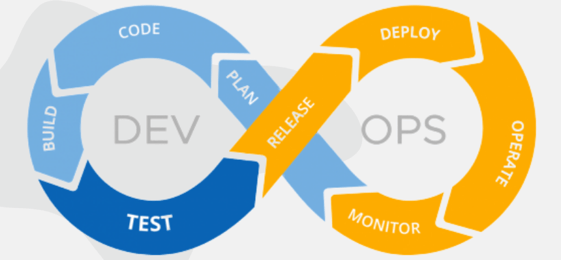
Planning to update your legacy application system?
It requires a lot of effort, time, and technical expertise to implement a new architecture, infrastructure, and delivery cycle. To provide a value-adding solution for the business, it is necessary to modernize apps without compromising the base and user data.
Terasol Technologies have a skilled staff of bespoke software developers who take into account every important issue while modernizing the legacy system of your company.
Ready to adapt and evolve? Let us help you with your system modernization.
